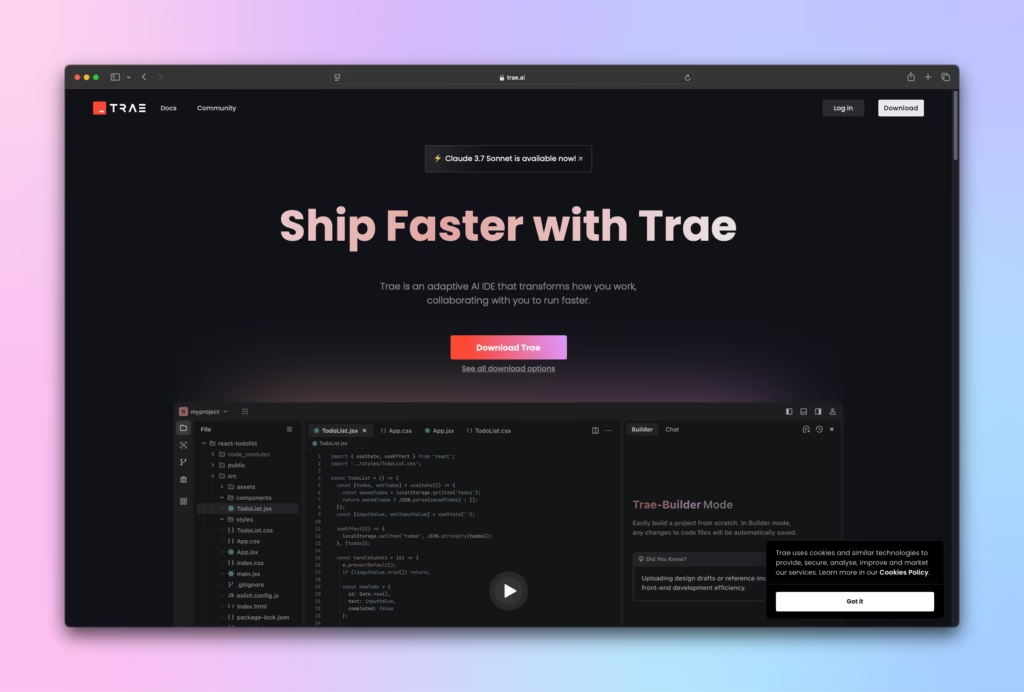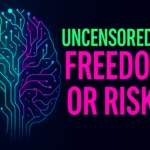Introduction
The tech world is buzzing with a revolutionary concept that’s changing the way software is developed—Vibe Coding. Popularized by Andrej Karpathy in early 2025, vibe coding leverages AI-driven tools to generate code based on natural language descriptions provided by users.
This paradigm shift opens doors for faster development, broader accessibility, and heightened creativity while challenging traditional programming methods. This blog delves into the fundamentals of vibe coding, explores its advantages and challenges, highlights cutting-edge Intelligent Development Environments (IDEs) such as GitHub Copilot, Cursor, and Trae.ai, and addresses its future potential.
What is Vibe Coding?
Vibe Coding is a transformative programming technique that utilizes large language models (LLMs) to convert human-readable prompts into executable code. Instead of painstakingly writing each line yourself, you simply describe the functionality you need, and the AI generates the code in seconds.
Key Features:
- Origin: It was coined by Andrej Karpathy, one of AI’s leading figures, marking a pivotal moment in AI-driven software development.
- How It Works: Developers input casual or technical descriptions, such as “create a chatbot API,” and AI tools handle the coding process—from backend structures to executable outputs.
- User Focus: The focus shifts from syntax mastery to creative ideation, enabling users to concentrate on “what to build” rather than “how to code.”
Benefits of Vibe Coding
Speed and Efficiency: With vibe coding, developers can bypass repetitive tasks and rapidly build prototypes. What once took weeks or months can now be achieved in hours, making it ideal for startup projects and rapid iterations.
Accessibility for All Users: Vibe coding democratizes software creation—individuals without coding expertise can craft applications by describing their ideas. Small businesses, designers, and entrepreneurs have found this game-changing.
Enhanced Creativity: AI tools free developers from manual syntax-related tasks, allowing them to focus on larger concepts and innovative problem-solving. Vibe coding enables exploratory workflows that foster creativity across industries.
Cost Savings: From freelancers to Fortune 500 companies, vibe coding minimizes dependence on large teams, reducing costs for development projects.
Challenges in Vibe Coding
Code Quality and Maintainability: AI-generated code is functional but not always optimized. Without proper reviews, issues like unreadable code structures or technical debt can accumulate. Developers must balance speed with maintainability.
Cybersecurity Risks: AI tools might inadvertently introduce vulnerabilities like exposed API keys or poor encryption methods. Vigilance and manual audits are essential to ensure security compliance.
Over-Reliance on AI Tools: Complete dependency on vibe coding tools can hinder developers’ ability to debug issues or create highly customized solutions. Developers must remain actively involved in the process.
Ethical Concerns: Automation raises industry-wide questions about bias in AI, intellectual property, and job displacement for human programmers.
IDEs Driving the Vibe Coding Revolution
Cutting-edge Intelligent Development Environments (IDEs) are powering vibe coding, offering features that make AI-assisted programming seamless and efficient. Let’s dive into three standout IDEs:
1. GitHub Copilot

GitHub Copilot, powered by OpenAI Codex, acts as an AI pair programmer. It suggests code snippets, automates repetitive tasks, and integrates smoothly with IDEs such as VS Code.
Features:
- Multi-language support for diverse programming needs.
- Context-aware code suggestions tailored to project specifics.
- Ability to generate complex functions based on single-line comments.
Example: Developers can type // Build a function that checks user input validity and Copilot instantly produces a tailored function.
2. Cursor

Cursor is an IDE designed for interactive programming, enabling conversational coding and debugging.
Features:
- Allows developers to ask questions like “What’s wrong with this function?” directly in the IDE.
- Supports collaborative real-time coding for team projects.
- Tailored for vibe coding workflows focused on iterative improvements.
Example: Developers can refine SQL queries or API endpoints by asking Cursor for optimizations.
3. Trae.ai

Trae.ai is redefining vibe coding with free access to pro-tier models like Claude 3.7 and DeepSeek R1, making it easier for individuals and teams to harness advanced AI for development without incurring costs.
Features:
- Converts natural language descriptions into secure, production-ready code.
- Provides pre-built modules for common functionalities like authentication or payment systems.
- Tracks code performance and scores maintainability, enhancing project longevity.
Why Trae.ai Stands Out:
Trae.ai is currently free to use, granting users access to high-performance AI models like Claude 3.7 and DeepSeek R1—ideal for startups or those experimenting with vibe coding.
Example: A prompt like “Build a customer support chatbot using NLP”, when fed into Trae.ai, yields a functional chatbot API that’s ready for deployment.
Real-World Applications of Vibe Coding
Startups and Innovation: Vibe coding is fueling rapid prototyping, enabling startups to test MVPs (Minimum Viable Products) swiftly and cost-effectively.
E-Commerce Automation: From inventory tracking to payment gateways, vibe coding simplifies backend processes for e-commerce platforms, enhancing efficiency.
Healthcare Tools: Healthcare organizations are using vibe coding to develop diagnostic applications, telemedicine systems, and patient management platforms.
Gaming and Creative Design: Gaming companies employ vibe coding for procedural level design, character scripting, and interactive storytelling based on user prompts.
The Future of Vibe Coding
What lies ahead for vibe coding?
Advanced AI Models: With the arrival of more sophisticated LLMs, vibe coding tools will generate cleaner, smarter, and more secure code, reducing manual oversight.
Citizen Developers: Vibe coding will empower non-tech users to create apps, fostering innovation across industries like education, fashion, and entertainment.
Cross-Industry Expansion: Industries from architecture to media will adopt vibe coding to streamline technical workflows.
Integration with Low-Code Platforms: Vibe coding tools will merge with low-code/no-code platforms, offering users the flexibility to make manual adjustments to AI-generated code.
Frequently Asked Questions (FAQ’s):
What is vibe coding?
Vibe coding is a revolutionary AI-driven approach to software development where users provide natural language prompts, and AI tools generate the corresponding code. It simplifies the programming process by focusing on describing problems or solutions rather than writing the syntax manually.
Who introduced the concept of vibe coding?
The term “vibe coding” was popularized by Andrej Karpathy, a renowned AI expert and former Tesla AI leader, in February 2025. It represents a significant leap in how developers engage with coding and technology.
How does vibe coding work?
Vibe coding relies on large language models (LLMs) like OpenAI’s Codex or other advanced AI systems. Users input high-level requirements or instructions in simple language, and the AI generates the necessary code. Tools like GitHub Copilot, Cursor, and Trae.ai help streamline this process.
What are the key benefits of vibe coding?
Speed: Development cycles are significantly faster, turning projects that took weeks into hours.
Accessibility: Non-programmers can create software without deep coding knowledge.
Creativity: Developers focus on high-level design and innovation, leaving repetitive work to the AI.
Cost-Effectiveness: Reduces the need for large development teams, saving time and money.
What are the challenges of vibe coding?
The primary challenges include:
Code Quality: AI-generated code may lack clarity and maintainability.
Security Risks: Vulnerabilities such as insecure coding practices could be introduced without careful review.
AI Dependence: Over-reliance on AI tools can reduce developers’ ability to debug or handle edge cases.
Ethical Concerns: Issues like job displacement and intellectual property remain areas of concern.
How does vibe coding differ from traditional coding?
Traditional coding involves manually writing and reviewing every line of code. Vibe coding shifts this approach by outsourcing most of the work to AI tools, with users focusing on instructions and architectural vision rather than syntax and debugging.
What industries are adopting vibe coding?
Vibe coding is gaining traction across diverse industries, including:
Tech Startups: Rapid prototyping and MVP development.
Healthcare: Building diagnostic and patient management tools.
E-Commerce: Streamlining inventory management and automating workflows.
Gaming: Designing procedural levels, scripts, and asset generation.
What tools and platforms support vibe coding?
Some of the leading tools and IDEs for vibe coding include:
GitHub Copilot: An AI-driven code assistant for generating contextual snippets.
Cursor: An interactive IDE optimized for conversational and collaborative coding.
Trae.ai: A free tool offering access to pro AI models like Claude 3.7 and DeepSeek R1 for production-ready code.
Why is Trae.ai considered unique in vibe coding?
Trae.ai stands out because it is entirely free to use, even for accessing advanced AI models like Claude 3.7 and DeepSeek R1. This makes it an ideal choice for startups, small businesses, and independent developers looking to experiment with vibe coding without paying for premium features.
Is vibe coding only for non-programmers?
No. While vibe coding democratizes access to coding for non-technical users, it is equally valuable for seasoned developers. Professionals can use vibe coding to automate mundane tasks, accelerate prototyping, and focus on complex, high-value projects.
Are there security risks involved in vibe coding?
Yes, AI-generated code may introduce vulnerabilities like insecure data handling or exposed API keys. Developers are advised to thoroughly review and test AI-generated code to ensure compliance with security best practices.
What’s the future of vibe coding?
The future of vibe coding looks promising:
Advanced AI Models: Cleaner, more secure, and maintainable code generation.
Citizen Developers: Non-technical creators exploring software development.
Broader Adoption: Use cases in education, architecture, and media.
Integration: Fusion with no-code and low-code platforms to offer a hybrid solution.
How can I start with vibe coding?
To start with vibe coding:
Choose an AI-powered IDE like Trae.ai (recommended because it’s free), GitHub Copilot, or Cursor.
Define your project requirements in clear, natural language.
Allow the AI to generate the code and refine it as needed.
Review for quality, optimize, and deploy!
Can vibe coding completely replace traditional programming?
Not entirely. Traditional programming will still be important for highly customized and complex systems. Vibe coding is a complementary solution that automates simpler tasks, speeds up development, and expands access to coding for non-experts.
How can vibe coding improve workplace productivity?
Vibe coding enhances productivity by reducing repetitive tasks, automating code generation, and empowering teams to focus on creative and strategic work. It particularly benefits agile workflows and rapid prototyping environments.
Conclusion
Vibe coding represents a monumental leap in software development. With IDEs like GitHub Copilot, Cursor, and the free-to-use Trae.ai, it empowers developers and non-programmers alike to focus on innovation rather than technical complexity.
As developers, businesses, and creatives integrate vibe coding into their workflows, a new era of AI-driven technology creation is unfolding. However, balancing its immense benefits with caution around security, code quality, and ethical considerations will be key to ensuring its success.
Are you ready to embrace the vibe coding era and transform your software development process? Let us know your thoughts below!












